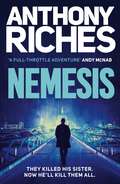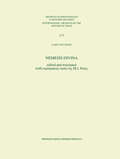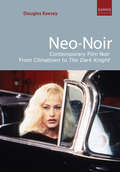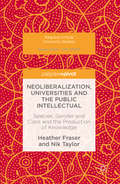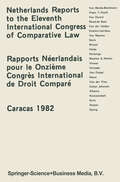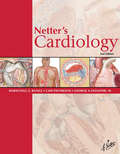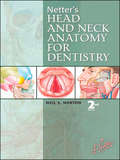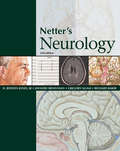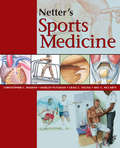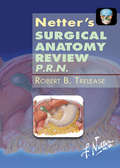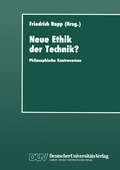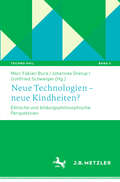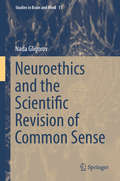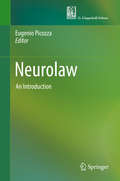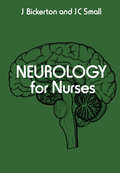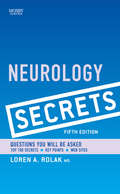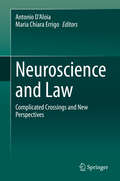- Table View
- List View
Nemesis (The Protector)
by Anthony RichesMickey Bale, a Met close protection officer, wants revenge on the mafia family who killed his sister. First in The Protector, a gripping British thriller series from Anthony Riches. 'Nemesis is a full-throttle adventure' ANDY McNAB'Fast-moving... The Bill meets Jack Reacher' THE TIMES Thriller of the MonthThey killed his sister. Now he'll kill them all. Mickey Bale is an elite close protection officer. That's why the Met police has given him the toughest job of all: guarding the Minister of Defence at a moment when Chinese-British relations have hit a deadly boiling point.And when Mickey's life isn't on the line for his work, he's taking his chances waging war on a powerful London gang family. Their dealer supplied a lethal ecstasy pill to his sister, and Mickey is determined to take them down, one at a time.But will he get away with it – or will his colleagues in the force realise that the man on an underworld killing spree is one of their own?'Nemesis is a full-throttle adventure that twists and turns from the corridors of power to London's gangland underbelly, propelled by a hero with a thirst for vengeance and the skillset to execute it' Andy McNab'Nemesis kicks like a 12-bore shotgun... A British thriller to rival Reacher' Giles Kristian'Mickey Bale is a Jack Reacher for a harder, faster, more assured millennium. Nemesis is the kind of book for which the word 'compelling' was coined' Manda Scott'Meet Mickey Bale – London's John Wick. A rocket-propelled grenade of a book, shot through with gallows humour. Guy Ritchie meets Lee Child' Robyn Young'This may be Riches' first contemporary-set novel but he throws his protagonist into a gladiatorial climax worthy of Ancient Rome' Shots
Nemesis Divina (International Archives of the History of Ideas Archives internationales d'histoire des idées #177)
by Carl von LinnéLinnaeus' mature theodicy, his attempt to reconcile the suffering and evil of the world with the omnipotence and goodness of God, is presented in a condensed form in the final editions of his Systema Naturae (1758/68). In this comprehensive compendium of our knowledge of the three great realms of organic nature, he outlines the significance of the sub-conscious, social awareness and theological orientation in the spiritual life of man, and indicates how fate, fortune, and Providence interrelate within his conception of the Deity. In the Nemesis Divina this general undertaking is developed into an `experimental theology', which is exactly analogous to Linnaeus' work in the natural sciences, in that it involves the collecting and classifying of concrete and carefully described case-studies. He never prepared the manuscript for publication, however, and for many years it was regarded as lost, and it is only very recently that any attempt has been made to publish it in its entirety. This is the first English translation of all the relevant manuscript material. It is also the first attempt to analyse the case-studies in the light of what we know of Linnaeus' general taxonomic principles, and to relate each of them to its historical context.
Neo-Abolitionism: Abolishing Human Rentals in Favor of Workplace Democracy
by David EllermanThis book argues for the abolition of the employment system in favor of workplace democracy and thus escapes the usual capitalism-versus-socialism binary choice by reframing the basic issue as the employment contract, not private property or a market economy. The author repositions the political and economic debate in the lineage of abolitionism - against the owning of other people - which in its modern version of neo-abolitionism would also abolish the renting, or hiring, employing, or leasing of other people.The overall argument is based on three recovered theories, each one of which is sufficient to yield the neo-abolitionist conclusion. These three rights-based theories are developed throughout the book. The three theories are 1) inalienable rights theory, 2) the natural rights or labor theory of property, and 3) democratic theory as based on a democratic constitution that only delegates governance rights versus a non-democratic constitution that alienates governance rights. The book, therefore, is a must-read for everybody interested in a better understanding of the political economy, workplace democracy, rights-based theories, and the employment system.
Neo-Noir: Contemporary Noir Film From Chinatown To The Dark Knight
by Douglas KeeseyA world- weary detective, a seductive femme fatale, a mysterious murder- these elements of classic film noir live again in more recent hardboiled detective films from Chinatown to Sin City. But the themes and styles of noir have also spilled over into contemporary films about gangsters, cops and serial killers (Reservoir Dogs, The Departed, Se7en). New hybrid genres have been created, including psycho-noirs (Memento), techno-noirs (The Matrix) and superhero noirs (The Dark Knight). Beginning with an introduction that shows how neo-noir has drawn upon contemporary social and historical events as well as the latest technological advances in filmmaking, this book discusses the neo-noir films that have made the biggest splash in the field ('landmarks'), the directors who have become cult figures of neo-noir, ('auteurs'), films from non-English speaking countries ('international') and neo-noirs that put a new spin on past noirs ('remakes'). The main credits and a plot summary are given for each neo-noir, followed by an in-depth analysis containing original insights into the meaning of the film. 'Factoids' also present fascinating facts, behind-the-scenes anecdotes and lively quotes from the cast and crew.
Neoliberalization, Universities and the Public Intellectual: Species, Gender and Class and the Production of Knowledge (Palgrave Critical University Studies)
by Heather Fraser Nik TaylorThis book employs an an intersectional feminist approach to highlight how research and teaching agendas are being skewed by commercialized, corporatized and commodified values and assumptions implicit in the neoliberalization of the academy. The authors combine 50 years of academic experience and focus on species, gender and class as they document the hazardous consequences of seeing people as instruments and knowledge as a form of capital. Personal-political examples are provided to illustrate some of the challenges but also opportunities facing activist scholars trying to resist neoliberalism. Heartfelt, frank, and unashamedly emotional, the book is a rallying cry for academics to defend their role as public intellectuals, to work together with communities, including those most negatively affected by neoliberalism and the corportatization of knowledge.
Netherlands Reports to the XIth International Congress of Comparative Law Caracas 1982
by H. D'OliveiraLast year I addressed the Netherlands Comparative Law Asso ciation with the following question: 'Does Comparative Law Exist At All?' (My intention then was to flog the dead (?) horse of the merger of comparative law and the sociology of law. ) In presenting this voluminous collection of Netherlands national reports to the eleventh congress of the Internatio nal Academy of Comparative Law I feel my misgivings giving way to the suspicion, that comparative law indeed exists. Of course national reports do not, as such, prove the exist ence of comparative law. It is the general reports together with the national reports, which embody the comparative effort. That is why the Netherlands Comparative Law Associa tion took the initiative to propose the publishing of the materials on a subject to subject basis instead of publish ing collections of national reports. From a comparative legal point of view, it is the topic that should form the basis of the publication, and not the origin of the materials. The general reporter for each topic should be prepared to take up the responsabilities of editing the volume, and would have to be given the right to select those national reports which he considers to be useful both in regard to their quality and the relevance of the material to the basic problems in the questionnaire. This proposal met with very favourable comments from the na tional committees and general reporters of some fifteen coun tries.
Netter Atlas of Human Anatomy: paperback + eBook (Netter Basic Science)
by Frank H. NetterThis is the Latin terminology edition. For students and clinical professionals who are learning anatomy, participating in a dissection lab, sharing anatomy knowledge with patients, or refreshing their anatomy knowledge, the Netter Atlas of Human Anatomy illustrates the body, region by region, in clear, brilliant detail from a clinician's perspective. Unique among anatomy atlases, it contains illustrations that emphasize anatomic relationships that are most important to the clinician in training and practice. Illustrated by clinicians, for clinicians, it contains more than 550 exquisite plates plus dozens of carefully selected radiologic images for common views. - Presents world-renowned, superbly clear views of the human body from a clinical perspective, with paintings by Dr. Frank Netter as well as Dr. Carlos A. G. Machado, one of today's foremost medical illustrators. - Content guided by expert anatomists and educators: R. Shane Tubbs, Paul E. Neumann, Jennifer K. Brueckner-Collins, Martha Johnson Gdowski, Virginia T. Lyons, Peter J. Ward, Todd M. Hoagland, Brion Benninger, and an international Advisory Board. - Offers region-by-region coverage, including muscle table appendices at the end of each section and quick reference notes on structures with high clinical significance in common clinical scenarios. - Contains new illustrations by Dr. Machado including clinically important or difficult to understand areas such as the Cavitas pelvis, Fossa temporalis and Fossa infratemporalis, Conchae nasi, and more. - Features new nerve tables devoted to the Nervi craniales, Plexus cervicalis, Plexus brachialis, and Plexus lumbosacralis. - Uses updated terminology based on the international anatomic standard, Terminologia Anatomica, with common clinical eponyms included. - Enhanced eBook version included with purchase. Your enhanced eBook allows you to access all of the text, figures, and references from the book on a variety of devices. - Provides access to extensive digital content: every plate in the Atlas?and over 100 bonus plates including illustrations from previous editions?is enhanced with an interactive label quiz option. Also available: • Netter Atlas of Human Anatomy: Classic Regional Approach -With US English terminology. • Netter Atlas of Human Anatomy: A Systems Approach—With US English terminology. Same content as the classic regional approach, but organized by body system. All options contain the same table material and 550+ illustrated plates painted by clinician artists, Frank H. Netter, MD, and Carlos Machado, MD.
Netter Atlas of Human Anatomy: Netter Atlas of Human Anatomy: A Systems Approach - E-Book (Netter Basic Science)
by Frank H. NetterFor students and clinical professionals who are learning anatomy, participating in a dissection lab, sharing anatomy knowledge with patients, or refreshing their anatomy knowledge, the Netter Atlas of Human Anatomy illustrates the body, system by system, in clear, brilliant detail from a clinician's perspective. Unique among anatomy atlases, it contains illustrations that emphasize anatomic relationships that are most important to the clinician in training and practice. Illustrated by clinicians, for clinicians, it contains more than 550 exquisite plates plus dozens of carefully selected radiologic images for common views. - Presents world-renowned, superbly clear views of the human body from a clinical perspective, with paintings by Dr. Frank Netter as well as Dr. Carlos A. G. Machado, one of today's foremost medical illustrators. - Content guided by expert anatomists and educators: R. Shane Tubbs, Paul E. Neumann, Jennifer K. Brueckner-Collins, Martha Johnson Gdowski, Virginia T. Lyons, Peter J. Ward, Todd M. Hoagland, Brion Benninger, and an international Advisory Board. - Offers coverage newly organized by organ system, including muscle table appendices and quick reference notes on structures with high clinical significance in common clinical scenarios. - Contains new illustrations by Dr. Machado including clinically important areas such as the pelvic cavity, temporal and infratemporal fossae, nasal turbinates, and more. - Features new nerve tables devoted to the cranial nerves and the nerves of the cervical, brachial, and lumbosacral plexuses. - Uses updated terminology based on the international anatomic standard, Terminologia Anatomica, with common clinical eponyms included. - Provides access to extensive digital content: every plate in the Atlas?and over 100 bonus plates including illustrations from previous editions?is enhanced with an interactive label quiz option and supplemented with "Plate Pearls" that provide quick key points and supplemental tools for learning, reviewing, and assessing your knowledge of the major themes of each plate. Tools include over 300 multiple choice questions, videos, 3D models, and links to related plates. Own your own personal copy of the world-famous Netter Atlas of Human Anatomy! This well-loved title, now in 8th edition, is available in multiple options. Choose the one best for you: • Netter Atlas of Human Anatomy: A Systems Approach—Described above • Netter Atlas of Human Anatomy: Classic Regional Approach—Same content as the systems approach, but organized by body region • Netter Atlas of Human Anatomy: Classic Regional Approach with Latin terminology All options contain the same table information and same 550+ illustrated plates painted by clinician artists, Frank H. Netter, MD, and Carlos Machado, MD.
Netter's Atlas of Human Embryology E-Book: Netter's Atlas of Human Embryology E-Book (Netter Basic Science)
by Larry R. CochardHere's a rich pictorial review of normal and abnormal human prenatal development. For each body system or region, you'll find a brief description of the developmental plan, with key concepts and terminology, followed by discussions of histological principles, the classification of congenital defects, and basic cellular, molecular, and genetic concepts; An emphasis on morphological patterns in the embryo and fetus makes it easy to understand the structure and function of the adult body and the embryonic basis of birth defects. Summary tables and terminology sections at the end of each chapter, plus an appendix with all major congenital defects and their embryonic basis, make it easy to review course material and prepare for the USMLE.
Netter's Cardiology E-Book (Netter Clinical Science)
by George Stouffer Marschall S. Runge Cam PattersonNetter’s Cardiology, 2nd Edition, by Marschall S. Runge, Cam Patterson, and George Stouffer, uses visually rich Netter artwork to efficiently provide you with a concise overview of cardiovascular anatomy, pathophysiology, diagnosis, and management. You'll rapidly access complete introductions to common issues in cardiology, including annotated references of the most important articles, guidelines, and available evidence. Netter - it's how you know.Efficiently review key details of anatomy, pathophysiology, and clinical presentation with detailed, crystal-clear artwork by Frank H. Netter, MD and other illustrators working in the Netter tradition. Apply dependable clinical advice from Marschall S. Runge, MD, PhD, Cam Patterson, MD and George Stouffer, MD and utilize diagnostic and therapeutic algorithms and clinical pathways developed by the many world-renowned chapter contributors. Utilize annotated references to the most important resources and evidence-based studies. Benefit from expanded coverage of cardiovascular imaging including echocardiography, stress testing and nuclear imaging, and CT and MRI.
Netter's Concise Orthopaedic Anatomy E-Book: Netter's Concise Orthopaedic Anatomy E-Book (Netter Basic Science)
by Jon C. ThompsonNetter’s Concise Orthopaedic Anatomy is a best-selling, portable, full-color resource excellent to have on hand during your orthopaedic rotation, residency, or as a quick look-up in practice. Jon C. Thompson presents the latest data in thoroughly updated diagnostic and treatment algorithms for all conditions while preserving the popular at-a-glance table format from the previous edition. You’ll get even more art from the Netter Collection as well as new radiologic images that visually demonstrate the key clinical correlations and applications of anatomical imaging. For a fast, memorable review of orthopaedic anatomy, this is a must-have. Maintains the popular at-a-glance table format that makes finding essential information quick and convenient. Contains useful clinical information on disorders, trauma, history, physical exam, radiology, surgical approaches, and minor procedures in every chapter. Lists key information on bones, joints, muscles, and nerves in tables correlate to each Netter image. Highlights key material in different colors—pearls in green and warnings in red—for easy reference. Features both plain film and advanced radiographic (CT and MRI) images, along with cross-sectional anatomic plates for an even more thorough visual representation of the material. Includes additional common surgical approaches to give you a broader understanding of techniques. Incorporates reorganized Complicated Arthology tables for large joints, such as the shoulder, knee, and hip, for increased clarity and to incorporate new artwork and additional clinical correlations. Reflects new data and current diagnostic and treatment techniques through updates to the Disorders and Fractures sections and the Physical Exam and Anatomic tables in each chapter. Presents the very latest developments in the field through thoroughly updated diagnostic and treatment algorithms for all clinical conditions.
Netter's Concise Orthopaedic Anatomy E-Book, Updated Edition: Netter's Concise Orthopaedic Anatomy E-Book, Updated Edition (Netter Basic Science)
by Jon C. ThompsonNetter's Concise Orthopaedic Anatomy is a best-selling, portable, full-color resource excellent to have on hand during your orthopaedic rotation, residency, or as a quick look-up in practice. Jon C. Thompson presents the latest data in thoroughly updated diagnostic and treatment algorithms for all conditions while preserving the popular at-a-glance table format from the previous edition. You'll get even more art from the Netter Collection as well as new radiologic images that visually demonstrate the key clinical correlations and applications of anatomical imaging. For a fast, memorable review of orthopaedic anatomy, this is a must-have. - Maintains the popular at-a-glance table format that makes finding essential information quick and convenient. - Contains useful clinical information on disorders, trauma, history, physical exam, radiology, surgical approaches, and minor procedures in every chapter. - Lists key information on bones, joints, muscles, and nerves in tables correlate to each Netter image. - Highlights key material in different colors—pearls in green and warnings in red—for easy reference. - Features both plain film and advanced radiographic (CT and MRI) images, along with cross-sectional anatomic plates for an even more thorough visual representation of the material. - Features both plain film and advanced radiographic (CT and MRI) images, along with cross-sectional anatomic plates for an even more thorough visual representation of the material. - Includes additional common surgical approaches to give you a broader understanding of techniques. - Incorporates reorganized Complicated Arthology tables for large joints, such as the shoulder, knee, and hip, for increased clarity and to incorporate new artwork and additional clinical correlations. - Reflects new data and current diagnostic and treatment techniques through updates to the Disorders and Fractures sections and the Physical Exam and Anatomic tables in each chapter. - Presents the very latest developments in the field through thoroughly updated diagnostic and treatment algorithms for all clinical conditions.
Netter's Head and Neck Anatomy for Dentistry E-Book (Netter Basic Science)
by Neil S. NortonNetter’s Head and Neck Anatomy for Dentistry, by Neil S. Norton, PhD, uses more than 600 full-color images from the Netter Collection to richly depict all of the key anatomy that’s relevant to clinical practice. This new edition takes your knowledge further than ever with more Netter illustrations; addition of over 20 cone beam CT images; new chapters on the upper limbs, thorax, and abdomen; and more than 100 multiple-choice questions. Whether for your dental anatomy course, board review, or as a handy reference in your dental office, this concise, visual guide is an excellent anatomy atlas and quick reference for students and professionals in dentistry and dental hygiene.Identify clinically relevant anatomy with Netter illustrations highlighted and modified for dentistry. See the practical important of anatomy from illustrated clinical examples in each chapter. Review essential concepts easily with tables that display the maximum amount of information in an at-a-glance format. Master anatomy for the head and neck and beyond, including upper limbs, thorax, and abdomen. Stay current on hot topics like cone beam CT imaging, intraoral injections, and anesthesia. Recognize the context and clinical relevance of head and neck anatomy through additional coverage of dental procedures. Prepare effectively for the dental boards with over 100 multiple-choice questions.
Netter's Infectious Diseases E-Book: Netter's Infectious Diseases E-Book
by Dennis L. Stevens Elaine C. Md, Dennis L. Stevens Elaine C. JongNetter's Infectious Diseases provides a comprehensive yet concise overview of current global infectious disease concerns. Elaine Jong and Dennis Stevens cover the basics of the field using beautiful Netter illustrations and accessible "need to know" information on major conditions and problems— including multi-drug-resistance, Staph infections, Chagas disease, and the flu. In print and online, it's a great tool for quick review or for sharing with patients and staff. - Review the basics of infectious disease through comprehensive coverage contained in a single volume reference. - Apply "need to know" information from the uniformly concise text and instructive Netter paintings. - View detailed Netter illustrations that provide a quick and memorable overview of microbiology, pathophysiology, and clinical presentation. - Stay current on modern infectious disease concerns—such as multi-drug-resistant tuberculosis, Staph aureus, Chagas disease, and the flu—with new illustrations in the Netter tradition specifically created to address new topics. - Access a companion website at www.netterreference.com featuring the complete searchable text, an Image Bank containing all of the book's illustrations…downloadable for your personal use, plus 25 printable patient education brochures.
Netter's Neurology E-Book (Netter Clinical Science)
by H. Royden Jones, Jr. Jr. Jayashri Srinivasan Gregory J. Allam Richard A. BakerNetter's Neurology, 2nd Edition, by Drs. H. Royden Jones, Jayashri Srinivasan, Gregory J. Allam, and Richard A. Baker, uses visually rich Netter artwork to efficiently provide you with a concise overview of general neurology and its intersection with internal medicine, neurosurgery, ophthalmology, psychiatry, and orthopedics. "It communicates often very difficult areas of neurology quite simply, and builds on basics to advanced understanding. I've never seen such well-thought-out and informative illustrations with such detail in another neurology book of this type." - First Prize Winner, Illustrated Book Category, British Medical Association 2012 Medical Book CompetitionMaster general neurology and its intersection with internal medicine, neurosurgery, ophthalmology, psychiatry, and orthopedics through comprehensive topic coverage. Get a quick and memorable overview of anatomy, pathophysiology, and clinical presentation from the precision and beauty of Netter and Netter-style plates that highlight key neuroanatomical and neurologic concepts. Explore specific clinical applications with vignettes included throughout the text that bring each topic to life. Find the information you need quickly and easily thanks to the short text and concise topic overviews. See the latest developments in the field in clear detail with new artwork and new entries on ALS, Eastern Equine Encephalitis, African Sleeping Sickness, and more. Effectively visualize the underlying anatomy in living patients through upgraded neuroimaging coverage, including MR, CT, and PET. Tap into additional treatment information with more clinical vignettes that provide "real-life" illustrative case evaluations.
Netter's Sports Medicine E-Book: Netter's Sports Medicine (Netter Clinical Science)
by Christopher Madden Margot Putukian Eric McCarty Craig YoungNetter’s Sports Medicine, by Christopher C. Madden, MD, Margot Putukian, MD, FACSM, Craig C. Young, MD, and Eric C. McCarty, MD, is a reference designed to help you meet the challenges presented by your patients in this growing interdisciplinary field. More than 1,000 Netter images, along with photos of physical examination techniques and imaging examples, provide a rich visual understanding, while a bulleted text format, combined with a user-friendly organization by specific types of injuries as well as different types of sports, makes reference quick and easy. Discussions of a full range of sports—traditional as well as less common—ensure that the coverage is comprehensive and up to date. From pre-participation exams, musculoskeletal injuries, sports nutrition, and sports psychology...to general medical problems in athletes...this reference equips you with the guidance you need to keep your patients at the top of their game.Presents more than 1,000 Netter illustrations accompanied by photos of physical examination techniques, radiographs, and other imaging techniques—including CT and MRI—that equip you with a rich visual understanding of sports medicine. Features a bulleted text format for quick-read guidance. Organizes information by specific types of injuries as well as different types of sports for an easy-to-access reference. Discusses traditional along with less common sports for comprehensive coverage that is up to date. Includes a section that examines considerations for specific athlete populations, including children, women, the senior athlete and the physically challenged, to help you meet their special needs. Presents the cross-disciplinary contributions of primary care physicians, athletic trainers, physical therapists, dentists, orthopaedic surgeons, and others, who provide a well-rounded perspective on the subject. Combines current, evidence-based information with expert clinical guidance for a high-yield reference.
Netter's Surgical Anatomy Review PRN E-Book: Surgical Anatomy Review (Netter Clinical Science)
by Robert B. TreleaseNetter’s Surgical Anatomy Review P.R.N., by Robert B. Trelease, makes it easy to visualize the anatomy that underlies the procedures and clinical conditions you see during a surgical residency or clerkship. Vibrant, detailed artwork by preeminent medical illustrator Frank H. Netter, MD illuminates each structure and its clinical relevance. A compact, portable format enables you to carry and consult the content anywhere "as needed." Customers have been asking for a "baby Netter" or "little Netter"…and here it is! Netter. It's how you know.Visualize anatomical structures clearly with the aid of detailed artwork by preeminent medical illustrator Frank H. Netter, MD. Understand the clinical implications quickly by scanning concise, bulleted explanations. Carry and consult the book anywhere "as needed" thanks to the book's compact, portable format.
Neue Technologien – neue Kindheiten?: Ethische und bildungsphilosophische Perspektiven (Techno:Phil – Aktuelle Herausforderungen der Technikphilosophie #3)
by Marc Fabian Buck Johannes Drerup Gottfried SchweigerZu den wichtigen sozialen Einflussgrößen, die nicht nur die Konstruktion, sondern auch die Realität und Praxis institutionalisierter Kindheit(en) mitbestimmen, gehören, so der Ausgangspunkt und der Gegenstand dieses Bandes, technologische Entwicklungen und die Anwendung und Nutzung von Techniken in der Kindheit für und durch Kinder. Technische Arrangements und Praktiken sind während der Kindheit omnipräsent. In diesem Band werden systematische ethische und erziehungs-, bildungs- und kindheitsphilosophische Fragen diskutiert, die sich im Umgang mit neuen Technologien und Techniken stellen. Hierzu zählen z.B. Fragen der folgenden Art: Wie sind (Neben-)Folgen der Einführung von AI-Systemen in Unterricht und Schule zu verstehen und zu bewerten? Dürfen Eltern die Fotos ihrer Kinder auf Facebook teilen? Welche Möglichkeiten und Fallstricke bietet die Nutzung von Robotern in pädagogischen Kontexten? Welche Rolle spielen neue Technologien bei der Gestaltung des Generationenverhältnisses und für technisch vermittelte und realisierte „Regime der Kindheit“?
Neues Leben aus dem Labor: Biowissenschaftliche und ethische Aspekte der Synthetischen Biologie
by Leona LitterstLeona Litterst vereint in systematischer Weise die Frage, ob mittels Techniken der Synthetischen Biologie „neues Leben“ hergestellt werden kann, mit der ethischen Dimension, ob dieses hergestellt werden soll und welche Regeln dabei gelten. Hierzu stellt sie fünf Forschungsansätze der Synthetischen Biologie detailliert dar, beleuchtet deren Anspruch, „neues Leben“ herzustellen, und bewertet Risikopotentiale in ethisch-anthroporelationaler Hinsicht. Sie untersucht zentrale ethische und systematische Aspekte zu Verantwortung, den Begriffen des Spiels, des Lebens, der Natürlichkeit und Künstlichkeit sowie dem moralischen Status von Forschungsobjekten der Synthetischen Biologie. Dabei wird deutlich, dass die Möglichkeit einer Herstellung von „neuem Leben“ nicht nur eine Frage nach der technischen Umsetzung ist, sondern auch danach, wie wir mit „neuem Leben“ sowie den möglichen Chancen und Risiken der Synthetischen Biologie zukünftig umgehen wollen.
Neuroethics and the Scientific Revision of Common Sense (Studies in Brain and Mind #11)
by Nada GligorovThis book is focused on the examination of the particular relationship between developments in neuroscience and commonsense concepts, such as free will, personal identity, privacy, etc., which feature prominently in moral discourse. In the book common sense is recast as an ever-shifting repository of theories from many domains, including science. Utilizing this alternative characterization of common sense, the book reexamines the impact of neuroscience on commonsense moral conceptions.Neuroethics is one of the newest, developing branches of Bioethics. Topics often raised include issues of free will, personal identity and the self; the possible ethical implication of memory manipulation; brain imaging and mind-reading; brain stimulation/enhancement and its impacts on personal identity; and brain death.
Neurolaw: An Introduction
by Eugenio PicozzaThis volume illustrates to the public, and legal experts, the basic principles of the field of neuroscience, that commonly goes under the name of Neurolaw. First, it illustrates the relationship between neuroscience, natural sciences and social sciences. Furthermore, it highlights numerous problems concerning the fundamental philosophical concepts used by Neurolaw and evaluates the validity of the method and the limits of a neuroscientific approach to the problems of law and justice.The volume explores the possibility of application of these concepts on the fundamentals of the general theory of law and legal dogmatics. It also examines the main problems of Neurolaw in relation to public, private, criminal and procedural law. In conclusion, the book follows a systematic method that makes it an thorough manual for the introduction to Neurolaw.
Neurology for Nurses
by J Bickerton J. Victor SmallNeurology for Nurses is an attempt to make neurology as clear as possible, using the nursing model. The first portion of this book provides a diagram of the planes of the body that considers the nervous system anatomically, which is referenced throughout the book. The different orientations and planes of the body include the anterior (ventral) surface, posterior (dorsal) surface, lateral, medial, sagittal (median) section, Coronal (frontal) section, and transverse. Other than detailed descriptions of the anatomy and functions of nerves and the nervous system, this book provides diagnostic evaluation of diseases and clinical conditions, such as multiple sclerosis, cerebrovascular accidents, brain tumors, head injury, epilepsy, Parkinson's disease, and meningitis. This book includes as well discussions on neurological examinations, investigations, and observations. The topic on nursing care for unconscious patients is also provided. This text is aimed primarily at nursing students in training, but will also benefits those taking a post-basic nursing course in neurology.
Neurology Secrets E-Book: Neurology Secrets (Secrets)
by Joseph S. Kass Eli M. MizrahiRevised and updated, Neurology Secrets, 5th Edition has the answers you need. A two-color page layout, portable size, and a list of the "Top 100 Secrets" in neurology help you better meet the challenges you face today. You’ll find all the features you rely on from the Secrets Series®—a question-and-answer format, lists, mnemonics, tables, and an informal tone—that make study or reference fast and easy. • Expedites reference and review with a question-and-answer format, bulleted lists, mnemonics, and practical tips from the authors. • Features a two-color page layout, "Key Points" boxes, and lists of useful web sites to enhance your reference power. • Presents a chapter containing "Top 100 Secrets," providing you with a quick and concise overview of essential material for last-minute study or self-assessment. • Fits comfortably in the pocket of your lab coat to allow quick access to essential information when you need it the most.• Presents completely revised chapters, covering all of today's most common neurologic conditions and their treatment to keep you up to date.
Neuroscience and Law: Complicated Crossings and New Perspectives
by Antonio D’Aloia Maria Chiara ErrigoThere have been extraordinary developments in the field of neuroscience in recent years, sparking a number of discussions within the legal field. This book studies the various interactions between neuroscience and the world of law, and explores how neuroscientific findings could affect some fundamental legal categories and how the law should be implemented in such cases. The book is divided into three main parts. Starting with a general overview of the convergence of neuroscience and law, the first part outlines the importance of their continuous interaction, the challenges that neuroscience poses for the concepts of free will and responsibility, and the peculiar characteristics of a “new” cognitive liberty. In turn, the second part addresses the phenomenon of cognitive and moral enhancement, as well as the uses of neurotechnology and their impacts on health, self-determination and the concept of being human. The third and last part investigates the use of neuroscientific findings in both criminal and civil cases, and seeks to determine whether they can provide valuable evidence and facilitate the assessment of personal responsibility, helping to resolve cases. The book is the result of an interdisciplinary dialogue involving jurists, philosophers, neuroscientists, forensic medicine specialists, and scholars in the humanities; further, it is intended for a broad readership interested in understanding the impacts of scientific and technological developments on people’s lives and on our social systems.
